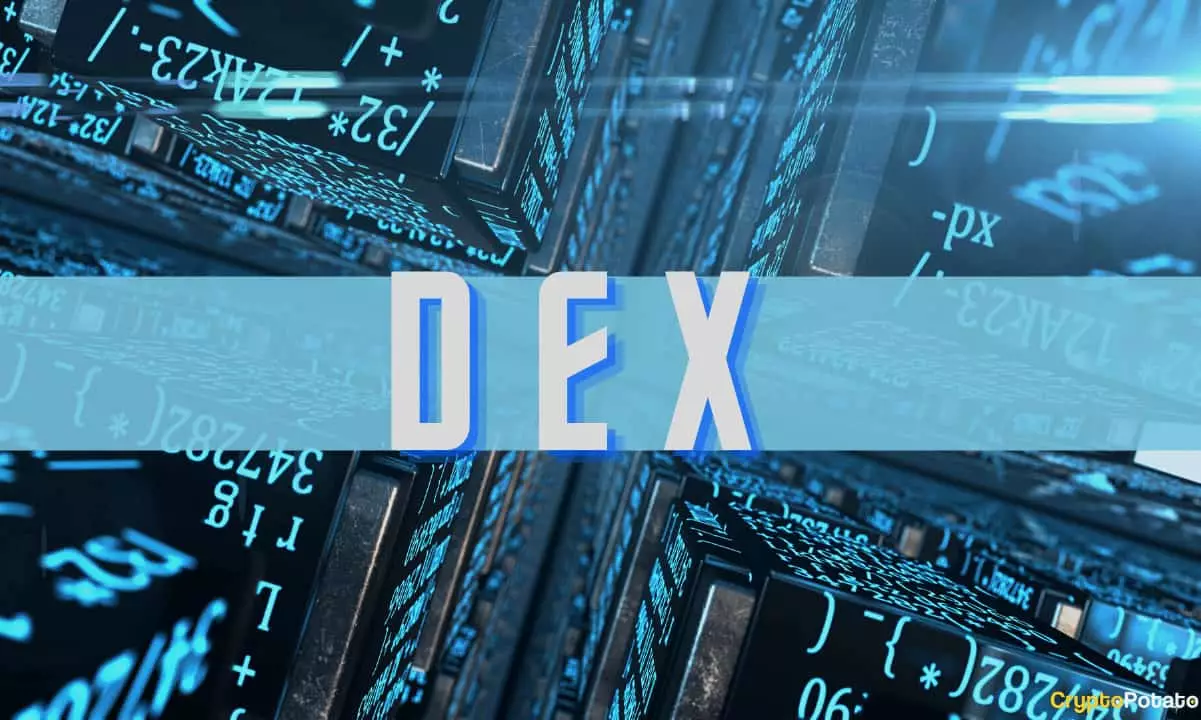Cryptocurrency markets have been on a recent surge, and this trend is not limited to just traditional centralized exchanges (CEX). The realm of decentralized finance (DeFi) has also experienced a spill-over effect. Historically, decentralized exchanges (DEX) have had lower trading volumes compared to their centralized counterparts. However, the recent market rally has led to increased activity in DEXs, albeit at a somewhat slower pace.
According to research from Kaiko, major platforms such as Uniswap and Curve on the Ethereum blockchain, as well as Pancakeswap on the Binance Smart Chain, have all noted a surge in activity. In November, the monthly trade volume on DEXs rebounded to $29 billion, recovering from a multi-year low experienced in September. While this improvement is significant, it still falls considerably short of the all-time high of over $124 billion recorded in May 2021.
The market share of DEX trade volume compared to CEX has declined over the past year, dropping to just 3% in November from 5% in January. This decline is notable considering that during the peak of DeFi excitement in November 2020, DEXs achieved an all-time high market share of 10%. It is evident that DEXs were more affected by the low market participation observed since the collapse of FTX.
Uniswap, the largest DEX, has seen a reduction in its market share relative to Coinbase. However, it still holds a significant position at 40%. The surge in DEX activity is further reflected in elevated lending rates, particularly for stablecoins. These increased rates indicate a rise in the number of loans being taken out, often for trading purposes.
The signs of recovery observed in the later part of Q1 lost momentum as trading volumes did not sustain the upward trend in Q2. Market conditions became more turbulent, particularly due to regulatory pressures on centralized cryptocurrency exchanges, making them the primary losers. However, these conditions also affected decentralized exchanges, resulting in a decrease of over 30% in spot trading volume on the top 10 DEXs from Q1 to Q2.
During the third quarter, CoinGecko reported that THORchain experienced the most significant growth, with its volume increasing by 113%. However, this surge in volume may be partly attributed to illicit transfers involving notable users such as the FTX hacker and the North Korean Lazarus group. On the other hand, Sushi, a longstanding presence on DEXs since its establishment in 2020, fell out of the top 10 during this period and was replaced by Orca.
The recent surge in cryptocurrency markets has had a spill-over effect on decentralized exchanges in the realm of decentralized finance. The trading volume on DEXs has experienced a rebound but still remains below the all-time high recorded earlier this year. The market share of DEX trade volume compared to CEX has also declined over the past year. Market conditions, regulatory pressures, and illicit activity have all played a role in shaping the evolution of DEXs in the cryptocurrency market. As the cryptocurrency landscape continues to evolve, it will be interesting to see how decentralized exchanges adapt and grow in the face of these challenges.















